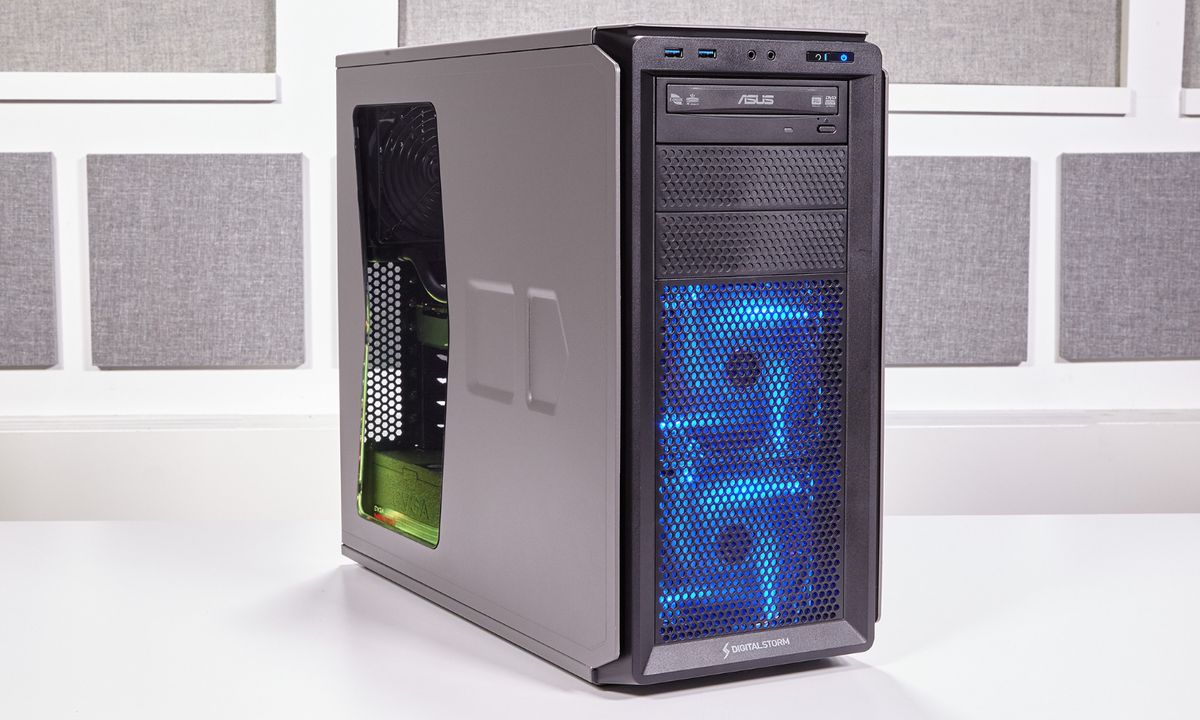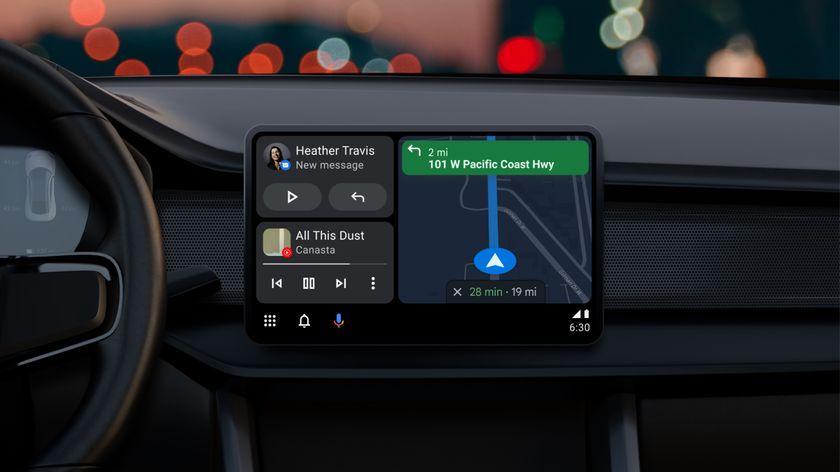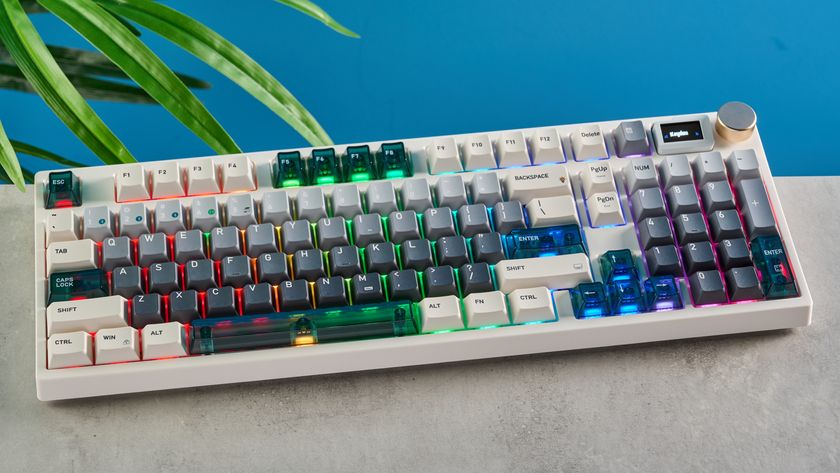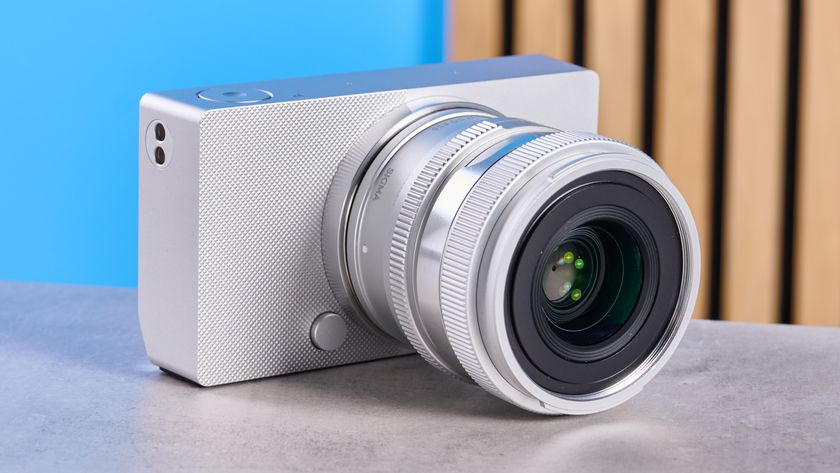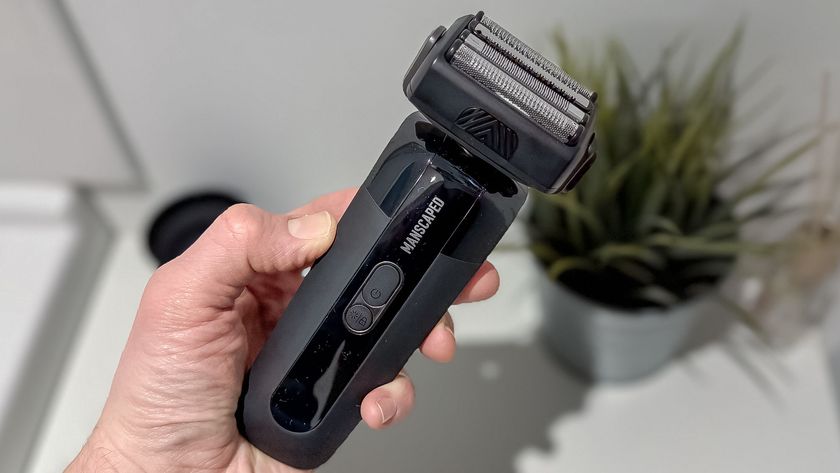Tom's Guide Verdict
The Digital Storm Vanquish 5 is a customizable, VR-ready gaming desktop with strong gaming performance at an affordable starting price.
Pros
- +
Strong gaming performance
- +
VR-ready
- +
Easy to upgrade
- +
Customizable lights
Cons
- -
Larger than the competition
Why you can trust Tom's Guide
Whether you want a budget gaming PC that's easy to upgrade or a VR powerhouse with the latest components, there's a version of the Digital Storm Vanquish 5 for you. The Vanquish 5 ($878 to start, $2,045 as reviewed) has VR-ready options for every gamer that include customizable lighting and an easy-to-remove side panel for tool-less upgrades. It's a little chunkier and plainer than the competition, but any gamers seeking value, performance and a plethora of customization options would do well to consider it.
Design
As far as gaming desktops go, the Vanquish 5 looks pretty darn plain. It's a chunky, gray box with few distinguishing features besides blue lights on the front and a window on the right side (with its own lights) that let you see the computer's internals.
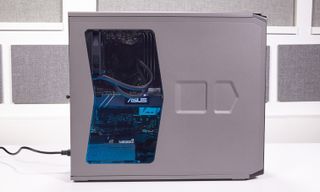
Although that gray case won't win any beauty contests, those window lights are pretty awesome. With an included remote, you can switch between a variety of colors, including blue, red, green, yellow, purple, white and orange, as well as make the lights blink or switch between colors. My favorite effect had the window transitioning between colors at a low, subtle speed.
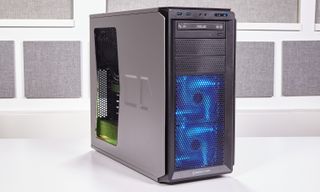
Both sides of the 20 x 17 x 8-inch tower boast arrows that add a bit of visual flourish and serve as useful guides telling you which way to slide the panel when you open up the PC.
It's a little bigger than the Alienware Aurora (8.6 x 14.1 x 8.3 inches), and like the Lenovo IdeaCentre Y900 (19.8 x 18.8 x 8.1 inches), it's a better fit under or next to a desk than in an entertainment center.
MORE: The Best Gaming Desktops Available Now
Specs
| Digital Storm Vanquish 5 Specs | Starting Configuration | Our Review Configuration |
| Price | $878 | $2,045 |
| CPU | Intel Core i5-6500 | Intel Core i7-6700K |
| Graphics | Nvidia GeForce GTX 1050 Ti 4GB | Nvidia GeForce GTX 1080 8GB |
| RAM | 8GB | 16GB |
| Storage | 1TB hard drive | 2TB hard drive, 250GB SSD |
| Size | 20 x 17 x 8 inches | 20 x 17 x 8 inches |
| Weight | Up to 45 pounds | Up to 45 pounds |
Ports and Upgradability
The Vanquish has a pretty standard port selection, with two USB 3.0 ports, a headphone and microphone jacks and a DVD-R/RW drive on the front. On the back are two USB 3.0 ports, a pair of USB 2.0 ports, the latest USB Type-C port, along with HDMI, DVI and DisplayPort options for video. You'll also get a PS/2 port for older peripherals and an Ethernet jack for wired gaming.
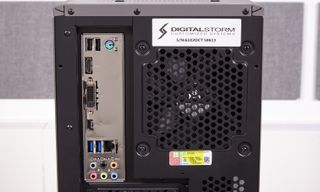
Opening and upgrading the Vanquish is a snap. All I had to do was untwist a hand screw on the back of the computer and slide off the side panel (helpfully marked with an arrow) to access the internals. You can even make significant upgrades to the PC without any tools at all; the SSD, HDD and even the GPU can all be taken out without any tools (though I found the hand screw holding in the GPU to be tight, and a screwdriver probably would've helped). There is plenty of room for extra storage and it's easy to upgrade the GPU, but with a 2TB HDD and a Pascal GPU, you probably won't need to make any significant changes for a while.
What's in the Box
Our review model came with an accessory chest filled with extra video cables, a remote control to change the case's lighting, driver discs and an instruction manual. The rig we reviewed included the default three-year warranty, but you can pay for a longer guarantee (starting at $99 for four years).
Gaming and VR Performance
Thanks to its Nvidia GTX 1080 GPU with 8GB of VRAM, the Vanquish 5 is ready to take on any game you throw at it, even if it's in 4K or VR. When I played Batman: Arkham Knight at 3840 x 2160, I cruised through Arkham City with a grappling hook and beat down baddies at 49 frames per second, albeit with some screen tearing. When I dialed the settings down to a resolution of 2560 x 1440, I raced the Batmobile through the streets and often hit the game's 90 FPS cap, but with much smoother rendering.
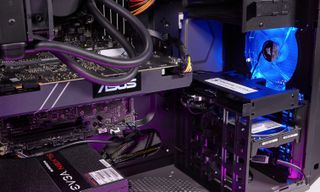
The Vanquish had no trouble with Hitman at 1080p with all of the settings cranked up to the max. It played the game at a buttery smooth 116 fps, surpassing the gaming desktop average of 81 fps and the Y900’s 70 fps. It even managed to run the game in 4K at 49 fps. On Rise of the Tomb Raider, the Vanquish ran at 68 fps at 1080p but struggled at 20 fps in 4K.
It also earned high marks on the SteamVR test, which runs a brief Portal-inspired demo in VR. The Vanquish's rating of 11 puts it far in the "Ready" bracket (both the Aurora and Y900 earned the same scores), so you should expect an optimal experience with your Oculus Rift or HTC Vive.

On the 3DMark Fire Strike Ultra synthetic benchmark, the Vanquish notched a score of 4,859, falling just below the Y900 (4,902) and the Aurora (4,903), but it still blew past the gaming desktop average of 3,847.
MORE: Best VR-Ready Gaming PCs
Overall Performance
When you're not using it for gaming, the Vanquish 5's 4.0-GHz Intel Core i7-6700K CPU, 16GB of RAM, 250GB SSD and 2TB, 7,200-rpm HDD make it a powerful workhorse. I played local 4K video, streamed a 1080p episode of "Last Week Tonight," downloaded a game from Steam, worked in Google Docs and had more than 30 tabs open in Chrome without the computer even breaking a sweat. Even when I played Grand Theft Auto V on top of all of this, the Vanquish didn't waver.

The Vanquish earned a score of 18,772 on the Geekbench 3 overall performance test, far surpassing the gaming desktop average of 13,992 as well as the Y900 (Core i7-6700K, 15,882) and the Aurora (Core i7-6700K, 16,398).
It took 2 minutes and 50 seconds for the Vanquish 5 to complete our OpenOffice spreadsheet macro, which pairs 20,000 names and addresses. That's speedier than both the Y900 at 3:10 and the category average of 3:20.
Configurations
Digital Storm offers the Vanquish 5 in various configurations that you can customize, from affordable and simple to expensive and intensely powerful. We reviewed a $2,045 modified version of the "Ultimate" build with a 4.0-GHz Intel Core i7 6700K CPU, 16GB of RAM, an Nvidia GeForce GTX 1080 with 16GB of RAM, a 250GB SSD and a 2TB, 7,200 rpm HDD.
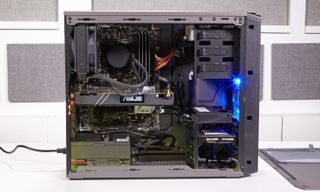
For $878, the "Good" configuration includes an Intel Core i5-6500 CPU, an Nvidia GeForce GTX 1050 Ti GPU with 4GB of VRAM, 8GB of RAM and a 1TB, 7,200-rpm HDD, perfect for those who want to spend less than a grand on their rig. The $1,287 "Better" build jumps to a GTX 1060 with 6GB of RAM and a Core i7-6700 CPU, along with a 240GB SSD alongside the HDD. The $1,539 "Best" rig bumps up the GPU to a GTX 1070 with 8GB of VRAM and 16GB of RAM.
MORE: The Best Headsets for Immersive Gaming
The company will overclock applicable processors free of charge (our machine had this) and also offers GPU overclocking ($45). It will also tweak the OS for maximum performance for some extra cash ($35).
Bottom Line
The Digital Storm Vanquish 5 may not be the most compact or most beautiful gaming PC, but don't be mistaken: It's a powerhouse. Its $878 starting price is a solid value for a gaming machine with a Pascal-based Nvidia GPU, and you can upgrade it as you please. Our $2,045 configuration was ready to handle everything we threw at it, and its potential for tool-less upgrades means that you can give it a bump easily in the years to come.
If you're looking for something a little prettier, consider the Alienware Aurora with its more compact chassis. However, the Aurora's $799 starting build has fewer components, including a non-Pascal GPU, than the cheapest Vanquish. But for those who care most about strong performance and upgradability, I'd be hard-pressed not to recommend Digital Storm's latest.
Andrew E. Freedman is an editor at Tom's Hardware focusing on laptops, desktops and gaming as well as keeping up with the latest news. He holds a M.S. in Journalism (Digital Media) from Columbia University. A lover of all things gaming and tech, his previous work has shown up in Kotaku, PCMag, Complex, Tom's Guide and Laptop Mag among others.
